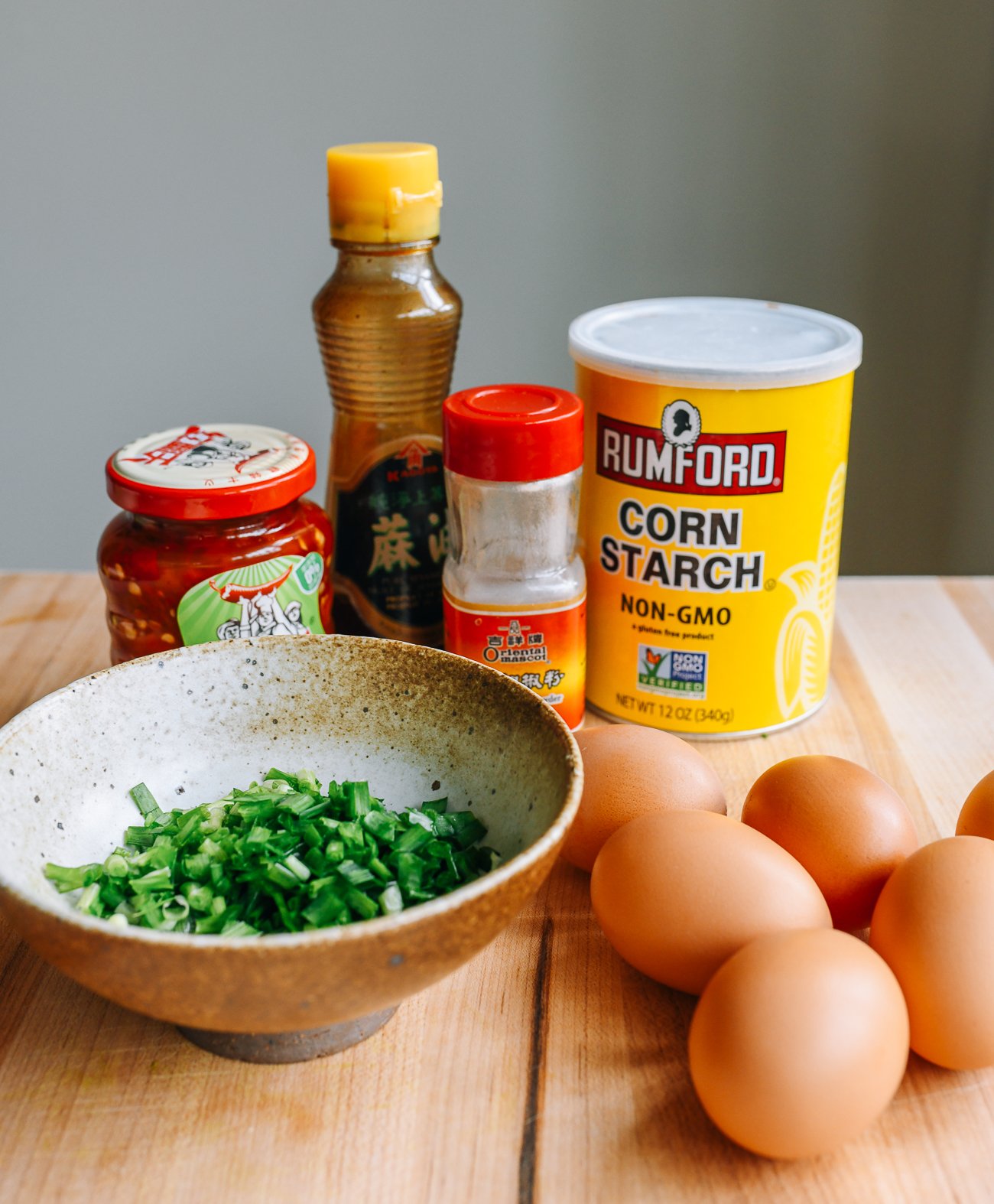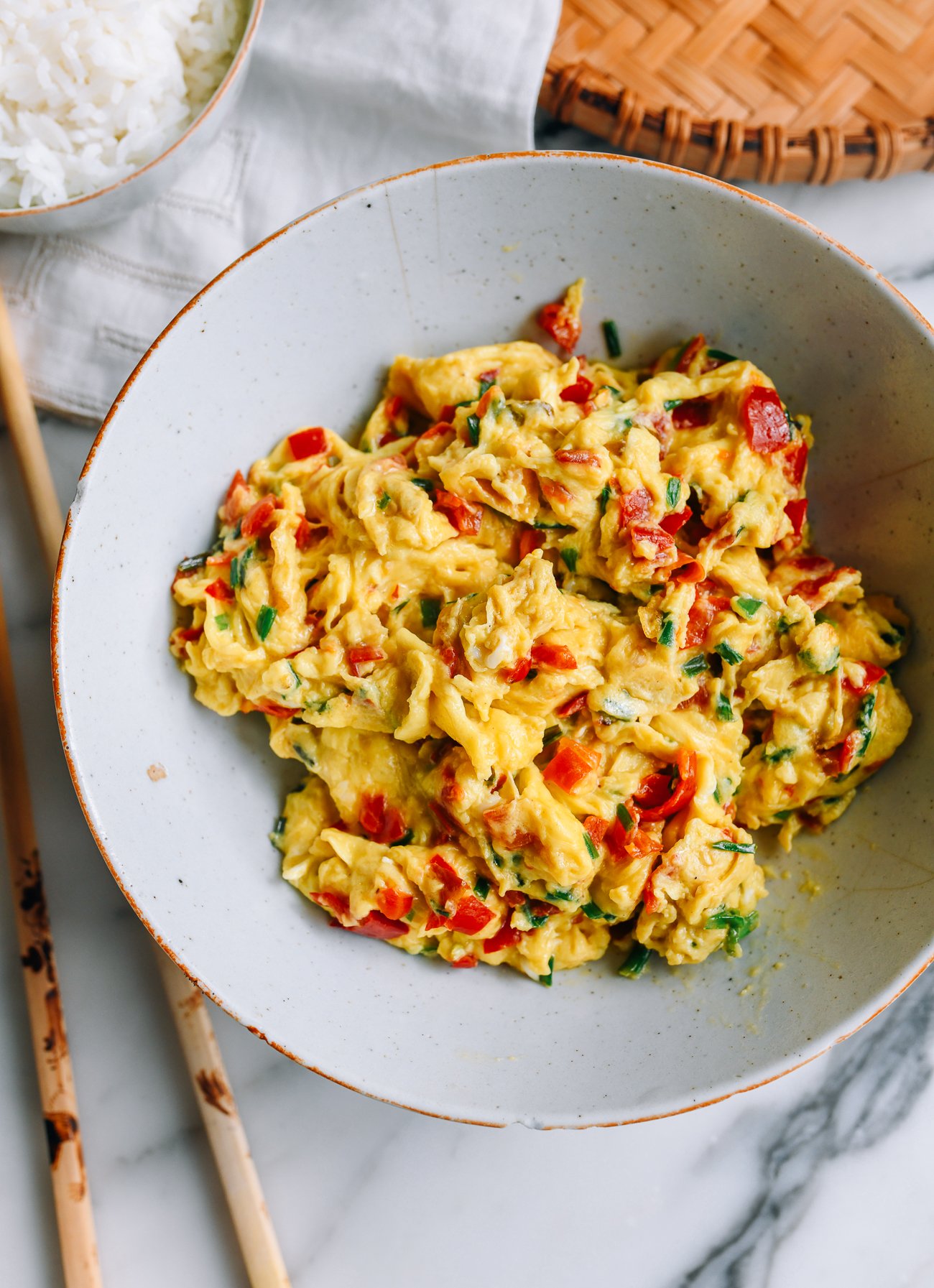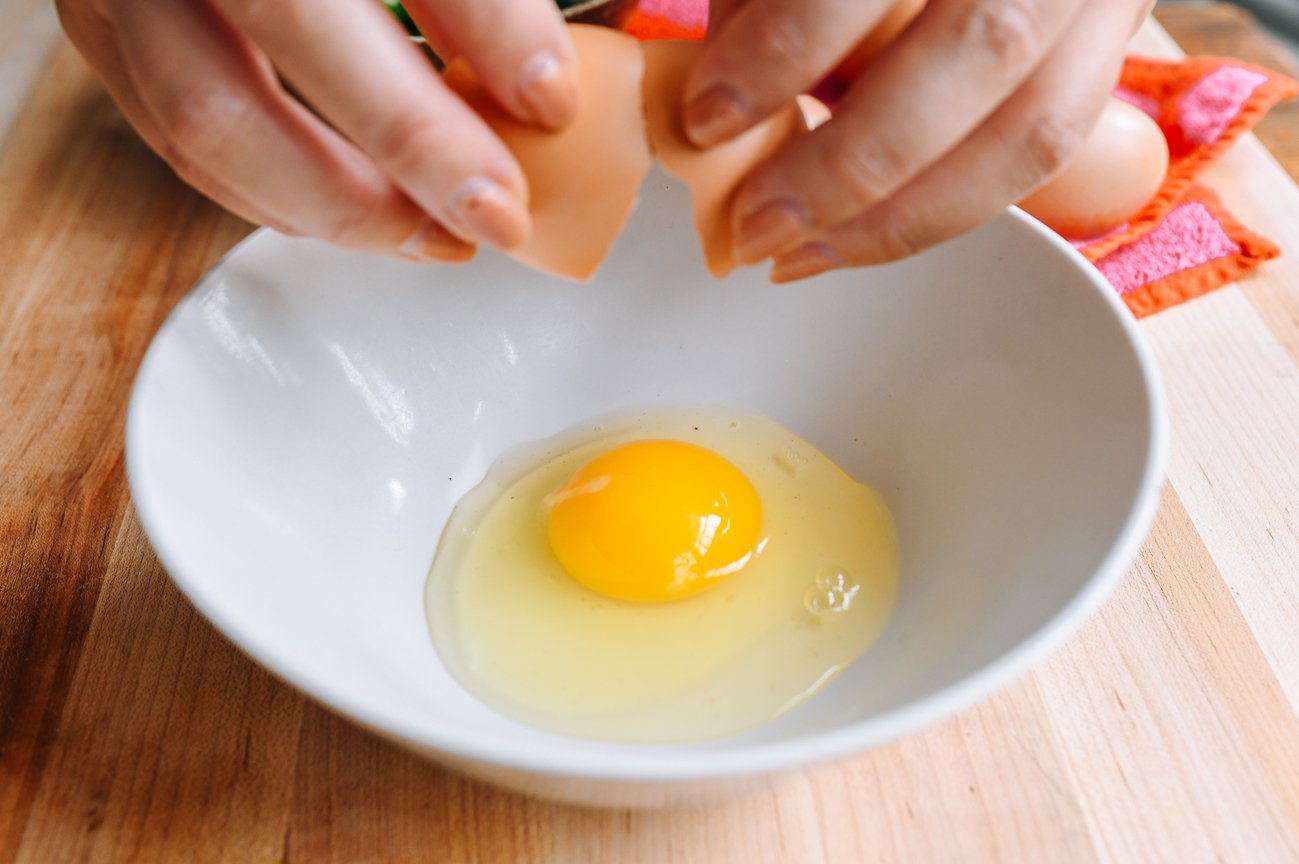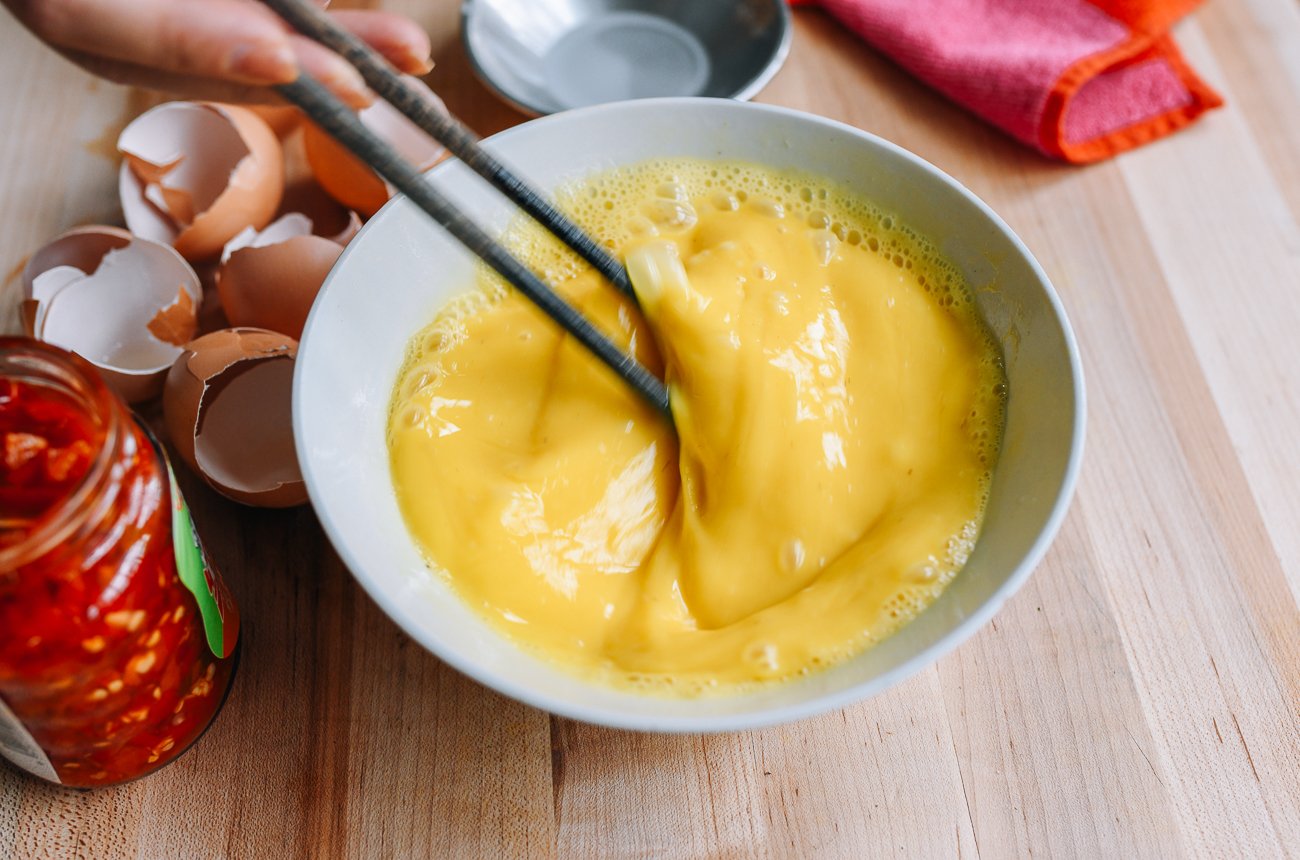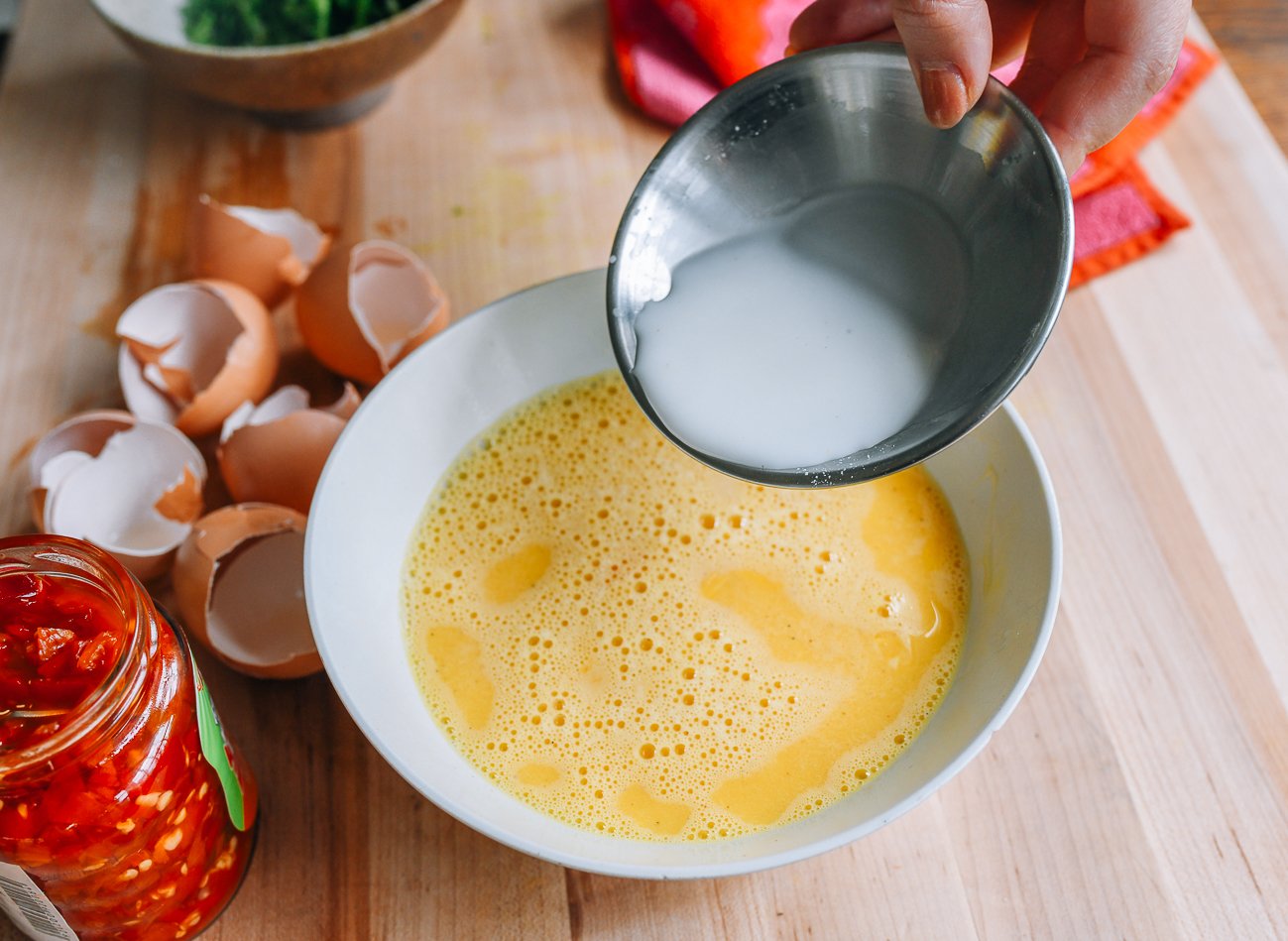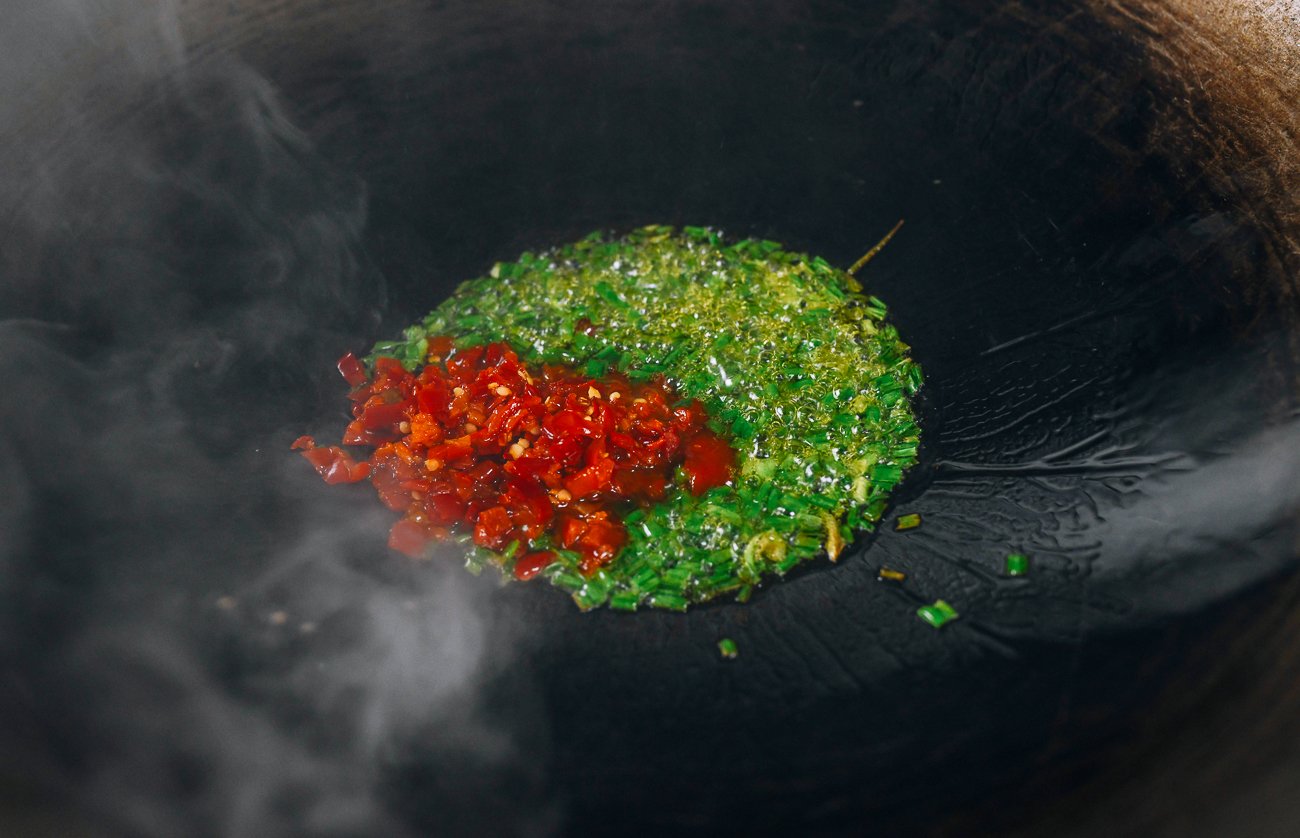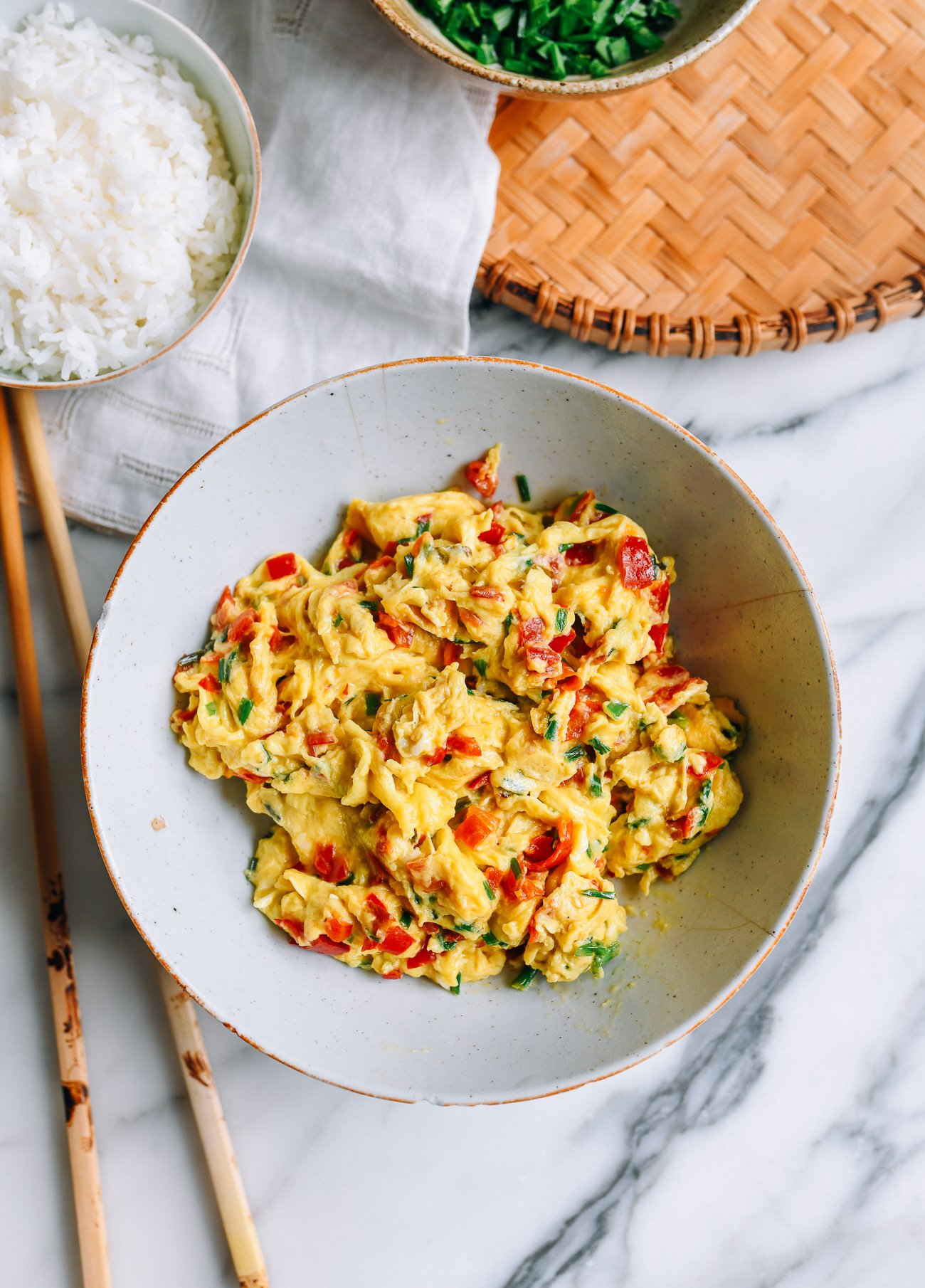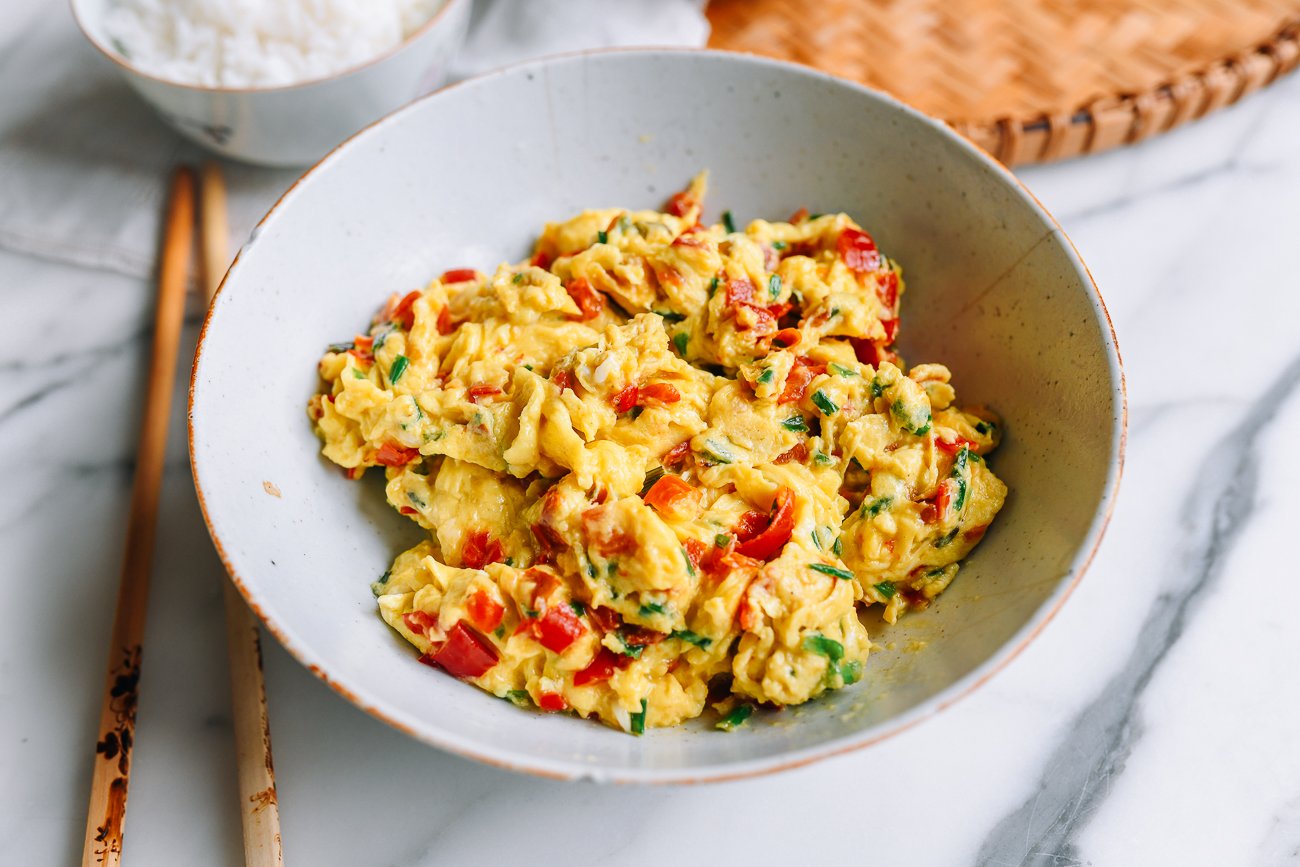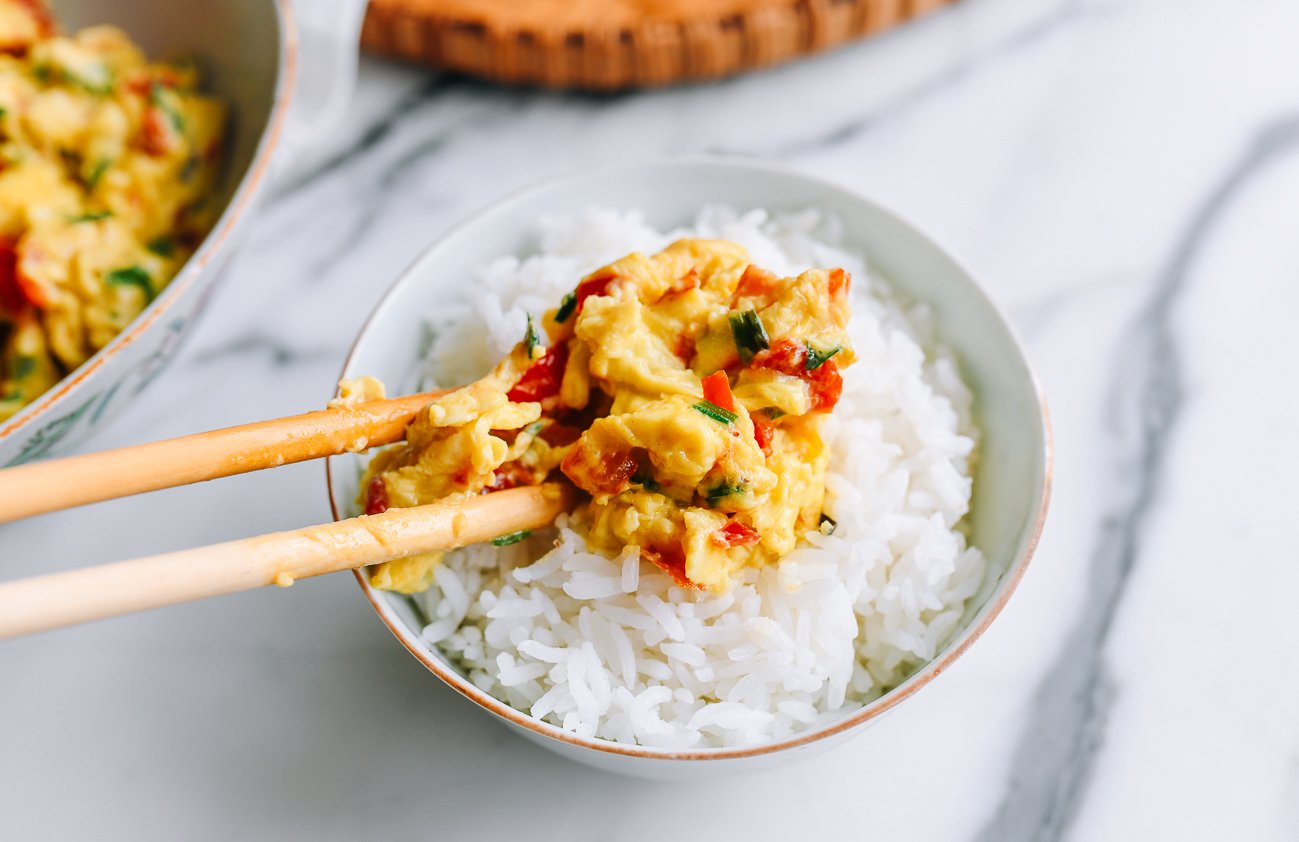In fact, everyone in my family knows I survive during the week largely off of a carton of eggs, a jar of duo jiao, rice, and a box of pre-washed spinach (which gets stir-fried quickly with garlic as a side dish). This recipe has become such a ubiquitous sight at my dinner table (or couch, rather) that I knew I needed to bring it to the blog. Unsurprisingly, we’ve already shared it—in frittata form. But after a couple times of attempting to make a neat frittata, I realized…not only was I wasting my time with careful flipping, it tastes infinitely better in the form of really fluffy Chinese-style scrambled eggs, cooked lightning fast in a wok or frying pan.
The Cornstarch Slurry Method
I was formerly of the opinion that just plenty of oil and a solid medium-high heat will get you reliably fluffy results, but when I broke out this recipe during a blogging session, the results were disappointing! Suddenly, with the pressure of Sarah’s camera lens bearing down on my lackluster plate of eggs, I started to second-guess myself… I’d heard of a classic Cantonese not-so-secret secret to getting fluffy eggs every time: cornstarch. It’s a method I first learned from Chinese Cooking Demystified—in their whompoa stir-fried eggs (wom bo? Cantonese romanization will eternally confuse me…), which J. Kenji Lopez-Alt heartily endorses. Sarah also discovered the method separately, as she uses it in one of her recipes in our new cookbook. It’s a Hong-Kong Style Furong Omelet, which was the delicious predecessor of American Egg Foo Young. We also use the method in the book to make tender egg ribbons to scatter over my mom’s delicious Shanghai Street Stall Wonton Soup. (Grab a copy of the cookbook here!) Little did I know, this is an old Cantonese chef’s trick. I mentioned it to my aunt (my dad’s older sister), and she casually said, “yeah, that’s the only way I stir-fry my eggs.” I tell ya…CC: Sarah’s casual withholding of Flour Bakery & Cafe’s banana bread recipe. But this is when my inner stubborn little sister gene kicked in. Did I really NEED to take that extra step? Most of the time, I got great results with just high heat, a good amount of oil, and a fast hand on the spatula. However, the key word there is MOST of the time. So for the past month, every time I’ve made these eggs, or any scrambled egg, I’ve been experimenting with the cornstarch slurry method—in a wok and in a nonstick pan. The results were superior every time. Not most of the time—every time. The other key is thoroughly beating the eggs. All the whites should be integrated with the yolks. There should also be some bubbles floating on the surface of the eggs. So, consider this stubborn home cook converted!
Recipe Modifications
This recipe was designed to be easy—a weekday lifesaver when you’re hungry and don’t have much time. That said, here are some modifications for whatever you’ve got on hand: You can make these scrambled eggs with:
Duo jiao + garlic chives (described here)Just duo jiaoJust garlic chives, regular chives, or finely chopped scallions
Regarding chive quantities…my mother likes it when this recipe is 50% egg / 50% chive (check out her Chive & Egg recipe). I prefer more uninterrupted fluffy eggs and lots of chilies. It’s really up to you! Again, if you can’t find garlic chives, feel free to substitute them with:
Regular chives: this actually really works great, with a mild onion flavorScallions: just be sure to chop them finer so you don’t get chunks of undercooked scallion overpowering the dish. (It can be rough; Point being, it’s not the time for large round discs of scallion.)
If substituting regular chives or scallions, use just 3 tablespoons to avoid overpowering the eggs. Regular chives are also not as vegetal as garlic chives. I find they’re not as enjoyable in larger quantities and should still be used with the finesse one employs with herbs.
Recipe Instructions
In a medium bowl, add the eggs, sesame oil, and white pepper. Beat with chopsticks, a fork, or small whisk for about 1 minute, until you see some frothy bubbles on the surface of the egg. Mix the cornstarch into a slurry with 1 tablespoon of water, and beat into the eggs. Heat a wok over high heat, or a nonstick skillet over medium-high heat. When it’s really hot, add the oil, followed by the garlic chives. Cook until they’re wilted but still bright green (you don’t want them to brown at all). Add the duo jiao salted chilies, taking care not to scoop the liquid with the peppers. (The liquid will make your eggs fry up less evenly.) When the wok is steaming again (i.e., really hot), pour in the eggs. Stir with a wok spatula (or rubber spatula, if using a nonstick skillet). Use wide scooping motions to fold the eggs towards the center, swirling any uncooked egg back onto the hot surface of the wok. No need to be strictly uniform—just make sure you’re using big strokes to make fluffy large chunks and constantly moving the eggs to avoid overcooking them. When the egg is just set (there may still be small runny pockets), turn off the heat and plate immediately. The eggs will cook in their residual heat on the way to the dinner table. Serve these Chinese scrambled eggs with chives and salted chilies alongside rice and stir-fried greens for an easy dinner.
